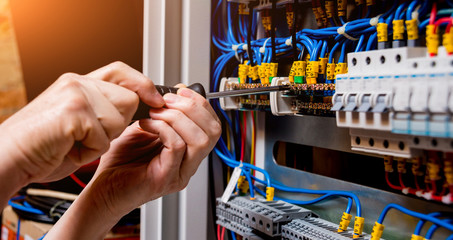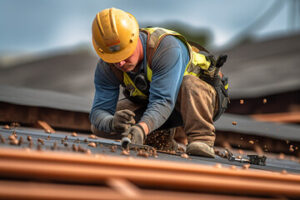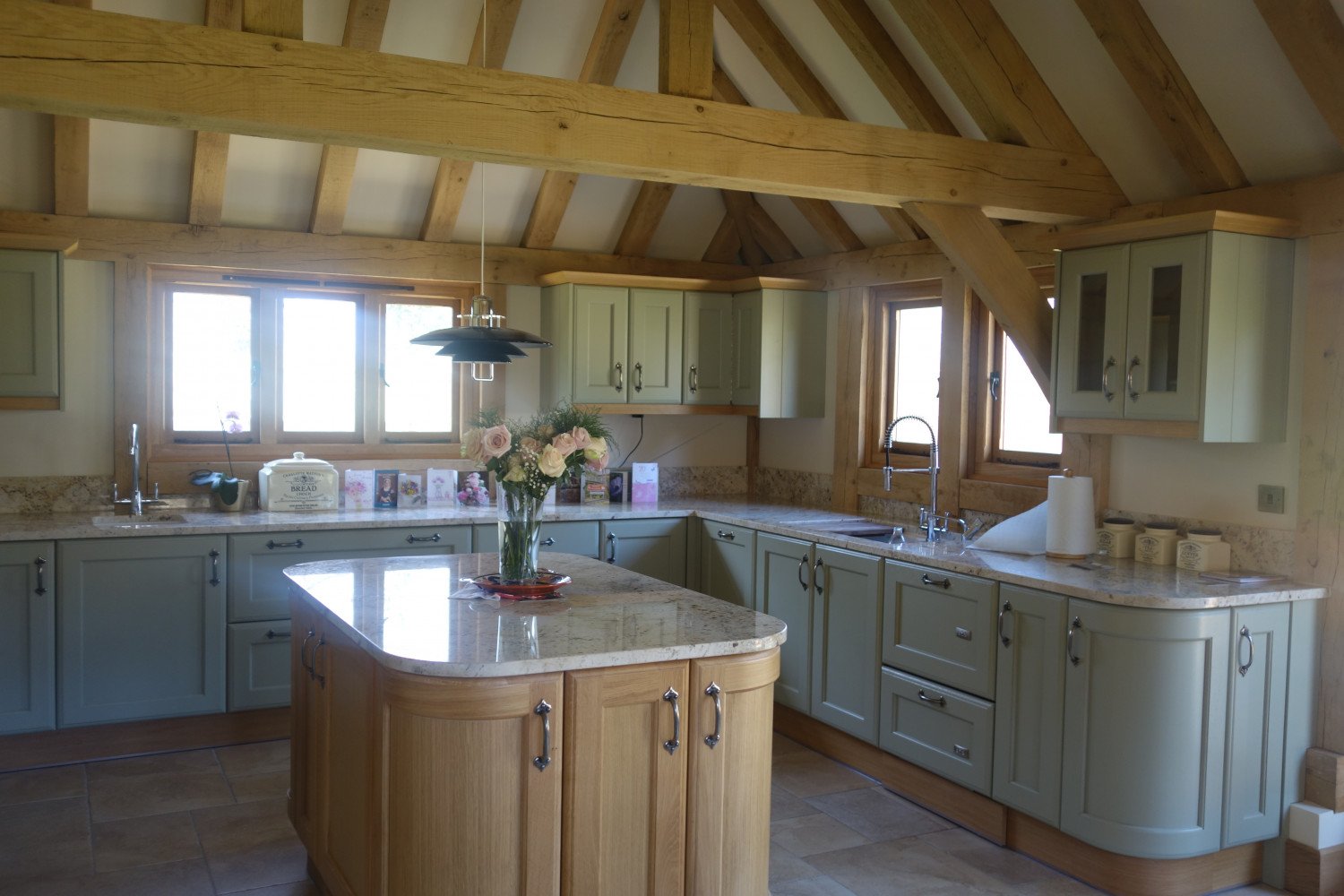Older homes may need a wiring upgrade to handle the power demands of modern appliances and technology. A wiring upgrade can also improve safety, especially if the house has two-pronged and ungrounded outlets or aluminum wiring that could become a fire hazard.
Whole-house rewiring is a big job that involves opening up walls to run new wires. However, some electrical upgrades can be completed during a remodel when access to the walls is open. Contact Electrician West Palm Beach for professional help.
The lights turn on when you flip the switch, and your refrigerator keeps food cold, so it’s easy to assume that your home’s electrical wiring is fine. If your house is older, it may be time for a wiring upgrade. Upgrading your electrical wiring prevents fire hazards and saves energy, making it a wise investment for any household.
A wiring upgrade also improves convenience. If you have old two-prong outlets, upgrading to three-prong outlets makes it easier to plug in devices without overloading the outlet and creating a fire hazard. It also allows you to use more advanced appliances, like electric motors and refrigerators, in your home.
Upgrading your electrical wiring can also prevent voltage drops, which can damage your appliances and electronics over time. A professional electrician can install larger wire to help ensure that your appliances and equipment receive the correct amount of current they need.
If you’re thinking of selling your house in the future, a wiring upgrade can make it more attractive to potential buyers. Many people are looking for modern features, and wiring upgrades that provide more outlets and USB ports can be a big draw. In addition, having a professionally installed wiring system will show potential buyers that the property has been maintained well and is safe to live in.
While a wiring upgrade can be an intensive job, it’s one that pays off in the long run. Not only will it help prevent fires, but it can also lead to lower insurance premiums. Some insurance providers even refuse to cover homes with older, knob-and-tube wiring, so upgrading your electrical systems can be a smart way to protect yourself and your family.
If your home is over 40 years old, it’s likely time for a wiring upgrade. Not only will it be safer for you and your family, but it can also increase the value of your home. Upgrading your electrical wiring will make it easier to sell your home in the future, and it will ensure that you meet building codes that can be difficult to reach if you have outdated wiring.
Increased Safety
Faulty wiring is responsible for many residential fires and can lead to injuries and deaths. Upgrading your old electrical system prevents this from happening, reduces costs and enhances value.
An upgraded electrical system also helps protect your devices and electronics from damage caused by overheating. Older systems are more prone to overheating and may be subject to rodents and other tampering, which can cause dangerous situations. Upgrading to newer copper wiring can help protect your home from these hazards and provide you with peace of mind.
Insufficient outlets and poor electrical wiring are often the source of problems in older homes. This can result in the use of extension cords, which are not only a safety hazard but can limit the amount of power that your appliances receive. Upgrading your wiring and ensuring that you have enough outlets throughout the house will help ensure that you can use all of your devices at once, without overloading any circuits.
GFCI (ground fault circuit interrupter) outlets should be installed in kitchens, bathrooms and other rooms with high moisture levels to prevent electric shocks and potential fires. You should also replace any two-pronged ungrounded outlets with three-pronged grounded outlets to improve safety.
If your home is more than 20 years old, it’s likely time for a wiring upgrade. This can be a complex task and is best left to professionals, such as Kobalt Systems. Our experienced journeyman electricians will perform a thorough inspection of your entire electrical system to determine whether it is safe and able to handle the amount of electricity that you need in your home.
If you’re preparing to sell your home, you can boost its value by upgrading the electrical system. This can include rewiring with modern copper wiring, installing a structured cabling system and adding additional outlets to your home. These upgrades will appeal to tech-savvy buyers and help you maintain or even increase your property’s value. If you’re unsure if your home’s wiring needs an upgrade, contact our team of experts at Kobalt Systems today for a free consultation.
Increased Value
Electrical wiring upgrades can increase the value of your home. If your house is over 40 years old, it likely needs a wiring upgrade. New wiring can reduce the risk of fires and ensure that your system can cope with the electricity demands of modern appliances.
It can also save you money on your electricity bills. If your home has old, outdated wiring, it can waste energy by sending electricity through circuits that are not in use. Modern wiring is designed to minimize energy loss and will significantly lower your utility bills.
Upgrading your wiring can also make it easier to sell your home. Many homeowners insurance providers will not provide coverage for homes that have old knob and tube wiring. Performing a full electrical service upgrade will eliminate this problem and will give potential buyers peace of mind.
In addition to standard home rewiring, there are many other electrical upgrades that can improve your home’s value and attract more buyers. These include recessed outlets, which are less expensive than standard outlets and offer a more attractive look. You can also add USB ports to your outlets, which will appeal to tech-savvy buyers. Another option is structured cabling, which can connect all of your devices and appliances for maximum compatibility and performance.
A professional can perform a home rewiring project in just a few days, so you can get back to your daily life without any interruptions. You can also choose to install smart home technology, which will further increase your home’s value and attract more buyers.
Although a wiring upgrade can seem like a daunting task, it’s important to trust a qualified electrician for the job. A skilled electrical contractor will take the necessary precautions to protect your property and keep you safe while working on your wiring. If you have any questions or concerns, contact us today to speak with an expert. We are here to help you upgrade your wiring and enjoy all of the benefits that come with it.
Increased Efficiency
The old, aluminum wires in older homes corrode over time, which presents fire risks and can limit the amount of electricity your home can draw. By switching to copper wiring, you’ll eliminate this risk and enjoy more consistent power throughout your house. This makes a wiring upgrade a great way to add value to your home while eliminating safety hazards and improving efficiency.
Modern devices and appliances require a lot of electricity to function. If your existing wires aren’t capable of handling this demand, it can cause problems like blown circuits and electrical outages. An electrician can help you determine the amount of current your home requires and recommend the appropriate size wire.
A rewiring job also provides you with the opportunity to install outlets that can accommodate USB ports and other upgrades, which will appeal to tech-minded buyers. These upgrades are easy for an electrician to do, and they can be a great way to make your home more attractive to prospective buyers.
Flickering lights, discolored outlets and switches, and a burning smell are all signs that your house’s electrical system needs an upgrade. By hiring an electrician to replace your electric meter base, weather head, load side service entrance cable and electrical panel, you can be confident that your house is safe and up to code.
If you’re planning to renovate your home, a wiring upgrade is a necessity. This type of work can be difficult and messy, but an experienced electrician can ensure that the project is completed quickly and with minimal disruption to your daily routine.
While a wiring upgrade is a worthwhile investment for any homeowner, it’s especially important if you plan to sell your property in the future. An up-to-date electrical system will attract more potential buyers and make them feel comfortable moving into your home, knowing that they’ll be safe from outdated wiring. A qualified electrician will also be able to advise you on other electrical upgrades that can improve your home’s appearance and functionality, including structured cabling, which is essential for today’s gadgets and will appeal to tech-minded buyers.





 The installation of a metal roof can be a dangerous project. Because of its size, fragility, and weight, it’s best to leave this work to metal roofing professionals
The installation of a metal roof can be a dangerous project. Because of its size, fragility, and weight, it’s best to leave this work to metal roofing professionals
